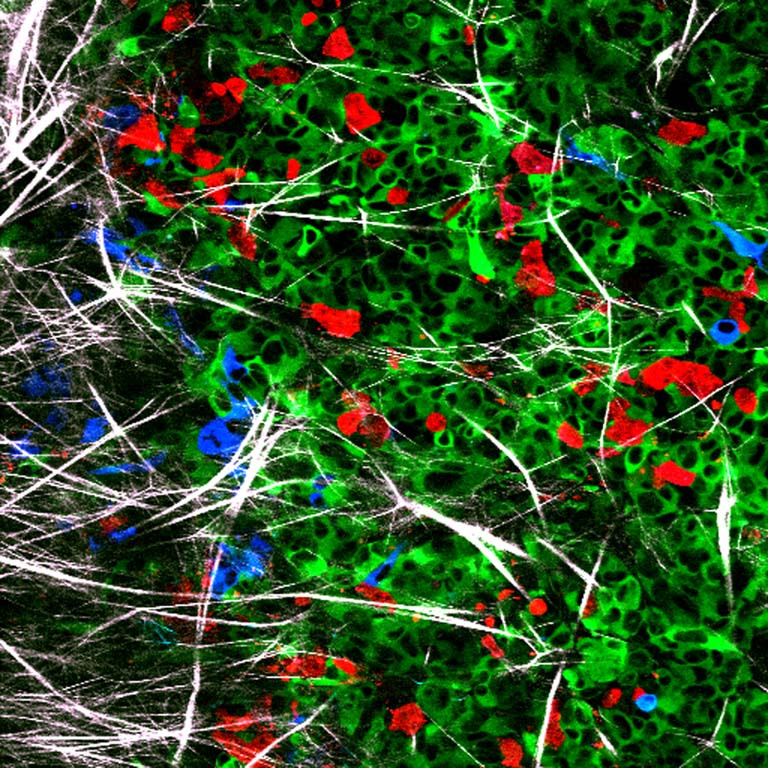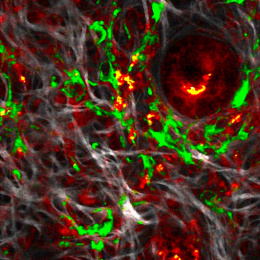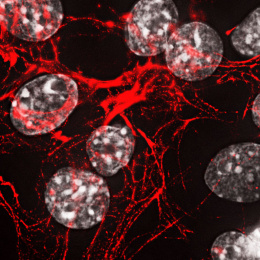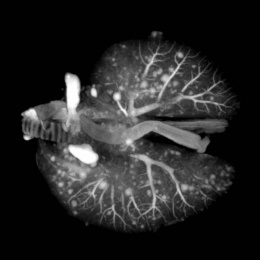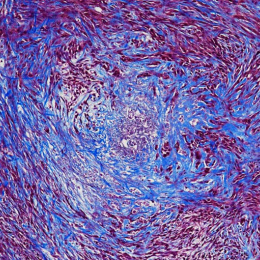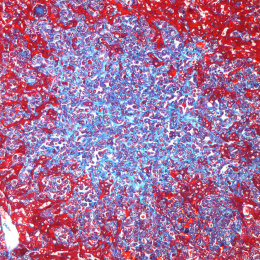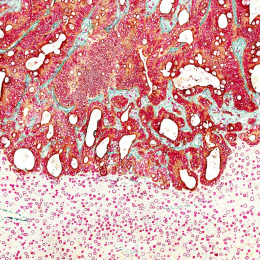Mena Isoforms and Cancer Complexity
Mena Isoforms and Cancer Complexity
Madeleine Oudin, with Jeffrey Wyckoff
MIT Department of Biology, Koch Institute at MIT
I took this image to understand how different Mena isoforms contribute to tumor heterogeneity, metastasis and chemo-resistance. Tumors are complex organisms, and they can evolve over time to contain tumor cells of different genetic makeup. This is what makes it hard for us to treat tumors – some cells within the tumor are able to metastasize and disseminate throughout the body, while some cells will remain put. In addition, some cells within the tumor will respond to a certain drug, but certain cells don't. The ones that don’t respond can then take over and keep growing.
This image captures the heterogeneity that exists within tumors. We have generated tumors that express different versions of one protein called Mena – the red cells have very low levels of Mena, the blue ones have intermediate levels of Mena, and the green one have high levels of MenaINV. MenaINV cells are more metastatic, they also survive more during chemotherapy treatment. The white the image represents collagen, which provides structural support to the tumor cells.
